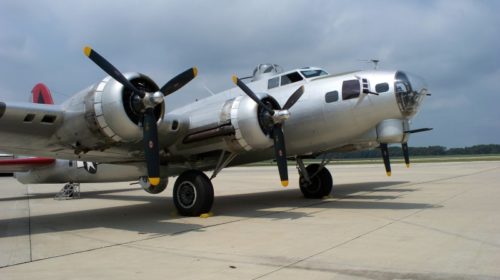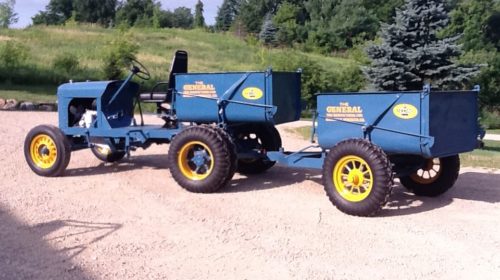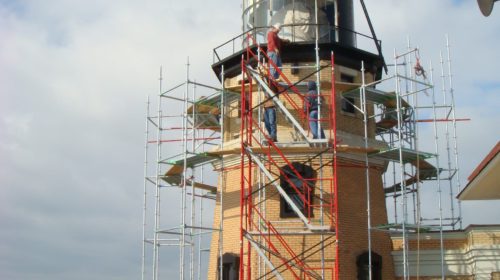
Dry ice blasting restores monument in half the time and costs of soda blasting
THE SITUATION
The Hightstown Historic Preservation Commission (HHPC) from the Borough of Hightstown, New Jersey was overseeing a $1.7 million streetscape project funded by the American Recovery and Reinvestment Act. Restoring a Civil War memorial was part of the project. The monument was erected in 1875, and is engraved with the names of 35 local soldiers who died in the United States Great Rebellion. The 23-foot high obelisk is carved from unpolished white Italian marble and rests upon a large block of American granite in tribute to the local heroic volunteers. Beneath the monument, resting upon granite blocks, are four Confederate Parrot guns known as the Brooke-type cannon.
THE PROBLEM
As part of the overall streetscape project, the HHPC wanted to restore this monument to its original state in preparation for the 150th anniversary of the Civil War. The monument had never been cleaned since being erected in 1875. It sits in a triangular park between two streets, and was coated with 136 years of traffic grime, minerals and dirt. In fact, the granite eagle at the top of the monument, once white, was completely black.
“This monument had never been properly cleaned since 1875,” said Daniel Buriak, project leader for the HHPC. “It had been hosed off or power washed to no avail, because of centuries of grime.”
The architect had originally specified the project for soda blasting. This method would have not only been abrasive to this historic structure, but would have required additional containment, costing more money.
The detailing on the monument was a big concern. The great seals of the United States, New Jersey and Mercer County are chiseled into the white marble above tablets bearing soldiers’ names. The front exhibits full size carvings of a Springfield rifle, a sword and standard. In addition, the marble eagle sitting on top of the monument has very delicate wings. Many areas on the monument – some carved as thin as 1/8” – caused concern for those in charge of this restoration.
“We were very worried about the potential of damaging the structure during cleaning,” said Buriak.
USCleanBlast.com, the contractor on the job, suggested that the HHPC, which had originally considered soda blasting, instead try dry ice cleaning. USCleanBlast.com, uses Cold Jet systems to clean many of their historic projects and knew that the method would be safer and gentler on this detailed structure.
THE SOLUTION
After USCleanBlast.com was able to convince the restoration team that they would benefit most from dry ice cleaning, the project moved forward. Cold Jet’s dry ice cleaning system uses non-abrasive media in the form of recycled CO2 pellets that won’t damage surfaces. The dry ice media, blasted using pressurized air at user-controlled speeds, sublimates upon impact with the surface being cleaned, lifting away dirt and contaminants safely, without leaving behind any secondary waste.
“While the architect had first asked for soda blasting, we knew it would cost twice as much,” said Bobbi Monacelli, owner of USCleanBlast.com. “With dry ice cleaning there is no secondary waste and no extra setup to contain any contaminates. In addition, with the historic details on this monument, we felt that dry ice cleaning would be the right answer.”
THE RESULTS
Using the Cold Jet Aero 40, Tom Monacelli, field supervisor at USCleanBlast.com, was able to successfully clean the monument’s old white carved surfaces. The dry ice cleaning easily lifted contaminates without leaving behind any secondary waste.
“In order to preserve the eagle’s wings, the names carved into the marble and the very thin details like the strap on the gun, I had to adjust the pressure. Everything came out great,” he said.
Most of the structure took only one pass to clean off. Where there was green moss or algae, a second pass completely cleaned it off.
“Of course, I was extremely nervous,” said Buriak, “but we couldn’t be happier with how it turned out. It was interesting that when it was being done, it almost looked like the monument was being spray painted white – that is how black it was in sections.“
USCleanBlast.com was very careful while cleaning this structure. They began the project by analyzing the state of the monument and then were very sensitive in the way they applied pressure. Where carvings were detailed – the rifle trigger, for instance, or the small pieces like the Seal of New Jersey which had faces with eyes, or the names carved on the sides of the monument – they backed off pressure to prevent erosion. Sections of the monument had old damage and cracks, but they lightly touched those areas so as not to cause further damage. It is now cleaned up nearly to its original linen white state, which is what we really hoped for.
“I went into this project thinking we would use soda blasting,” said Buriak. “But when we used dry ice cleaning we didn’t have to cordon off anything, put up scaffolding, cover other areas, and there was no debris flying around. There was literally no mess. It was wonderful because this monument was part of a very large construction project and there was a lot going on with adding landscaping, granite walls and brick walkways to the park. If we would have had to contain the soda or sand, it would have been a complicated, longer process. So a fringe benefit to dry ice cleaning was that it was so clean and executed so easily. This is something I had not even considered at the beginning of the project but that I came to really appreciate.”
With dry ice cleaning, the cost of the monument restoration was $7,000, instead of the $16,000 quoted for soda blasting, allowing the HHPC to apply that money saved in other areas of their streetscape project. The dry ice cleaning was done in one and a half days, with two workers, and the extra day was only needed because a boom lift needed to be obtained to comfortably reach the eagle. This was done in less than half of the time and manpower it would have taken to use soda blasting.
“The best part was that the dry ice cleaning cost half as much as the soda blasting,” said Tom Monacelli. “With soda blasting, I would have needed to hire union scaffold workers to erect and envelope the scaffolding, I would have needed to put negative air on the monument and at the end would have needed to perform the cleanup – doubling the price and length of the job. With dry ice technology, we cleaned the monument and were done.”

